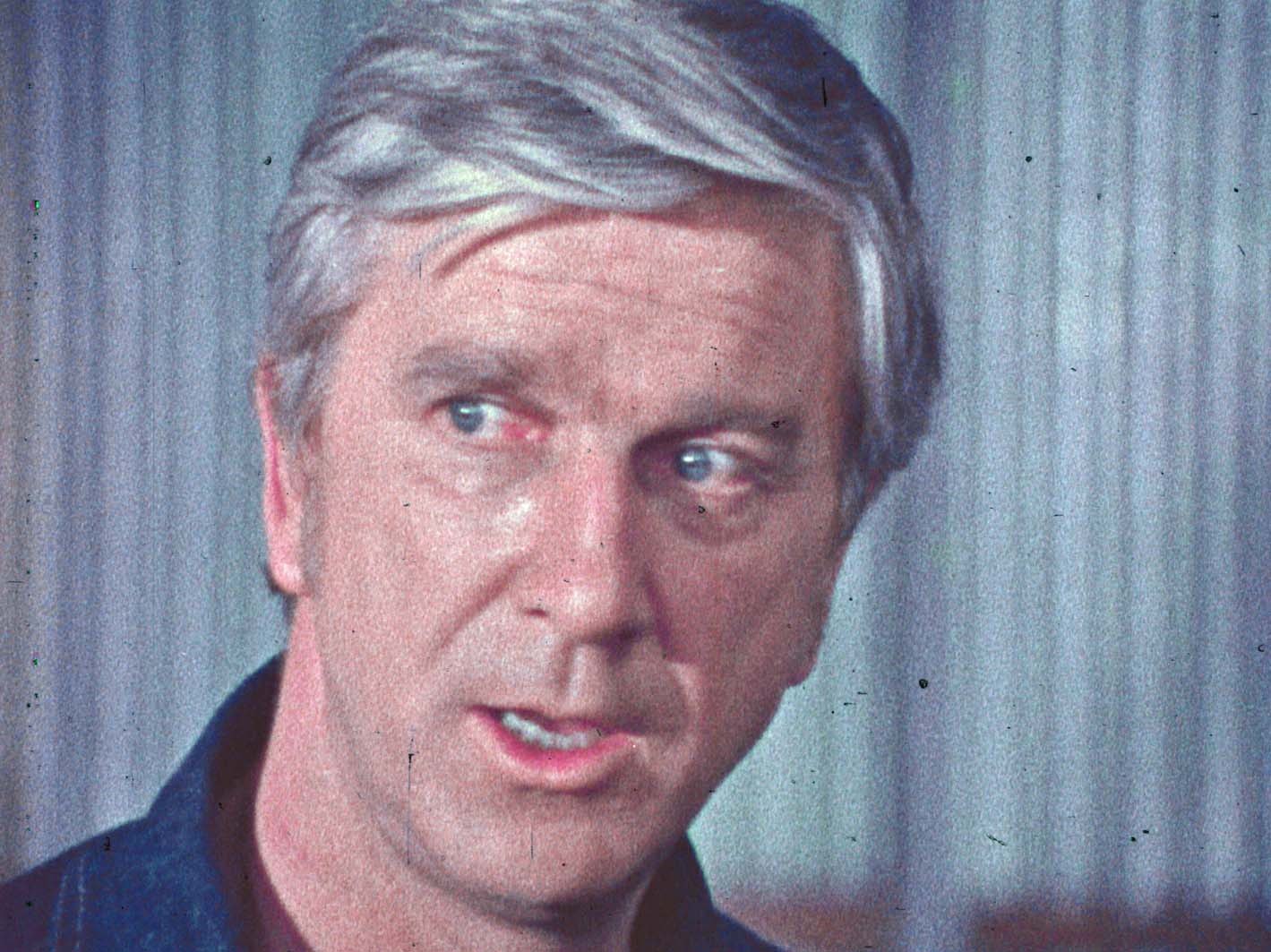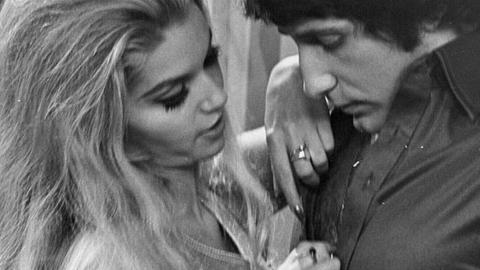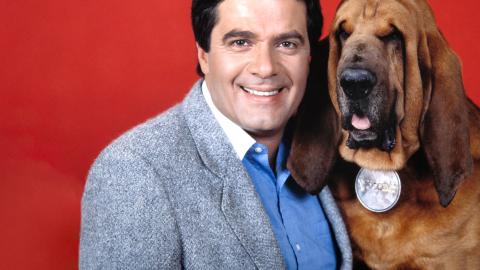

The Evil Touch
The Evil Touch 1970s – Horror-Suspense Anthology TV series
On 6 September at the NFSA, crime writer and pulp scholar Andrew Nette joins us to examine the origins, making and reception of the 1970s TV series, The Evil Touch. We will also showcase the first episode to screen in Australia, 'The Obituary' (starring Leslie Nielsen) and the series’ most innovative episode, 'Kadaitcha Country'. Book tickets.
Death by Dreaming
The Evil Touch was an Australian 26-episode anthology series of horror and suspense stories. Each self-contained episode delves into tales of murder, science-fiction and the supernatural, bookended by host Anthony Quayle’s cryptic musings.
Here are the opening minutes from episode 23, ‘Death By Dreaming’, starring Carol Lynley and Sandy Harbutt. Note the left-hand-drive car in this clip:
Excerpt from The Evil Touch, Episode 23, 'Death By Dreaming', 1972. Courtesy: Peter Greenwood. NFSA title: 1489784
The American touch
The Evil Touch was a rare example of a 1970s USA-Australian television co-production. Though filmed in and around Sydney, the series was ostensibly an American creation with producer-director, episode writers (including Sylvester Stallone!) and principal cast all US imports.

Among those flying in were actors Leslie Nielsen, Vic Morrow, Darren McGavin and Julie Harris. Many local actors were contracted for the support roles; Jack Thompson, Tony Bonner, Jill Forster and Rowena Wallace were among those attempting their best American accents.
As locations were to be considered American, left-hand-drive cars were brought in (see clip above), or signs were written in reverse for outdoor street scenes and the film then flipped when being printed.
Quayle never set foot in Australia, filming his links initially in England and then, after episode 4, from wherever he was based.
The Nine Network provided some financial support, and Ajax Films the local production facilities.
High Hopes
'Producer-director Mende Brown was a lovely man – a real gentleman. It was the last TV series to be shot in Australia on 16mm Ektachrome colour film stock', series editor Anthony Buckley fondly recalls.
The first of 26 half-hour episodes was syndicated on stations across the USA in September 1972. Australian audiences had to wait until the following year, the series premiering in Sydney on TCN9 in prime time, on 19 June 1973.
Though filmed in colour, episodes were initially viewed here in black-and-white, colour TV broadcasting still being 20 months away.
The Nine Network clearly had high hopes for the success of The Evil Touch, scheduling it directly against Australia’s most controversial series of the 1970s, the hugely popular Number 96 on the 0-10 Network.
Today, the series remains fondly remembered by many an Australian TV night owl, with frequent late-night repeats over the following decade. Its broadcast rights having expired, The Evil Touch finally disappeared from Australian screens in 1986 and has remained unavailable for domestic purchase.
Though the present whereabouts of the picture and sound negatives remain unknown, the NFSA recently acquired a complete set of 16mm colour prints of all 26 episodes.
Screening The Evil Touch
Crime writer and pulp scholar Andrew Nette joins us in Canberra for a screening of the first Evil Touch episode to screen in Australia, 'The Obituary' (starring Leslie Nielsen), and the episode 'Kadaitcha Country'. View details and book tickets.
Note: Aboriginal and Torres Strait Islander viewers are advised that 'Kadaitcha Country' may contain names, images and audio of deceased persons. Some of the content may also cause some distress. The NFSA would like to acknowledge the contribution of the Lardil People of Mornington Island to the making of 'Kadaitcha Country'. We pay our respects to their Elders past, present and emerging.
With thanks and appreciation to Anthony Buckley AM, David Donaldson and Peter Greenwood.
The National Film and Sound Archive of Australia acknowledges Australia’s Aboriginal and Torres Strait Islander peoples as the Traditional Custodians of the land on which we work and live and gives respect to their Elders both past and present.

